Items
In item set
Case Study 1
-
 Jean Sheils - The Depression Contextual material on the 1930s. In this interview, Jean Sheils discusses disillusionment amongst women during the Great Depression, mother and father’s history with unionism, and their eviction during the Great Depression. She also discusses the single unemployed, the difference in labour struggles from the 1930s to the 1980s, and the On to Ottawa trek. Jean Stewart Evans (1927-1995) was born in Vancouver, BC, second child of Ethel, and well-known labour rights organizer, Arthur “Slim” Evans. She recalls a childhood home always open to organizers and labourers in need, and impacted by her father’s arrests and short-term imprisonments.
Jean Sheils - The Depression Contextual material on the 1930s. In this interview, Jean Sheils discusses disillusionment amongst women during the Great Depression, mother and father’s history with unionism, and their eviction during the Great Depression. She also discusses the single unemployed, the difference in labour struggles from the 1930s to the 1980s, and the On to Ottawa trek. Jean Stewart Evans (1927-1995) was born in Vancouver, BC, second child of Ethel, and well-known labour rights organizer, Arthur “Slim” Evans. She recalls a childhood home always open to organizers and labourers in need, and impacted by her father’s arrests and short-term imprisonments. -
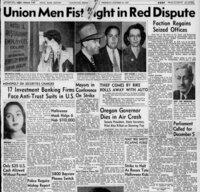 Union Men In Fistfight in Red Dispute: Faction regains seized offices International Union reps expell alleged Communist officers of HREU Local 28 from the headquarters. These included Emily Watts, local union president and May Ansell, local Businessness Agent. Vancouver Sun October 30, 1947
Union Men In Fistfight in Red Dispute: Faction regains seized offices International Union reps expell alleged Communist officers of HREU Local 28 from the headquarters. These included Emily Watts, local union president and May Ansell, local Businessness Agent. Vancouver Sun October 30, 1947 -
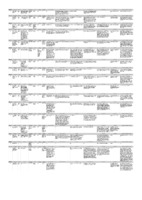 Case Study 1: Oral Histories Research document A thematic guide for the Women's Labour History Project oral histories. This work is ongoing. As of March 2024, we have drawn on oral histories from VIVO Media Arts Centre, SFU Archives, and newspaper interviews . We will soon be working on additions from other archives, like the BC Labour Heritage Centre. This multi-sheet xls spreadsheet includes (1) Object metadata for all interviews; (2) Interviewees biographical details; and (3) Research notes: select excerpts from the interview(s) and details related to our research questions (one sheet per interviewee) ID structure (1) Each interviewee is assigned a letter which is their "Subject ID" (A,B,C, etc.) (2) Each Object (research resource) is assigned an "Object ID" : a combination of the "Subject ID" and a number assigned to delineate each research resource (ie A1, A2, A3, etc). (3) Individual interviewees research sheet is identified using the individual's Subject ID followed by a colon and their surname (ie, A: Fawcett) About our Interviewee Biography sheet Drawing on publicly available resources and implementing genealogical strategies and proof standards, Knights expanded the biographies of the oral history participants. This assisted the researchers with clarifying timelines, locations, and confirming identifies. This latter step was required to ensure that we were researching the correct individual. The women regularly went by nicknames, middle names, maiden names if married, divorced surnames if single, Mrs or Miss irrespective of their actual marital status. It also gives insight into the way waitresses shifted marital status for protection, anonymity, or hirability. The biographic and demographic material also informs the interviewees own statements on why they became involved in union activity or activist movements.
Case Study 1: Oral Histories Research document A thematic guide for the Women's Labour History Project oral histories. This work is ongoing. As of March 2024, we have drawn on oral histories from VIVO Media Arts Centre, SFU Archives, and newspaper interviews . We will soon be working on additions from other archives, like the BC Labour Heritage Centre. This multi-sheet xls spreadsheet includes (1) Object metadata for all interviews; (2) Interviewees biographical details; and (3) Research notes: select excerpts from the interview(s) and details related to our research questions (one sheet per interviewee) ID structure (1) Each interviewee is assigned a letter which is their "Subject ID" (A,B,C, etc.) (2) Each Object (research resource) is assigned an "Object ID" : a combination of the "Subject ID" and a number assigned to delineate each research resource (ie A1, A2, A3, etc). (3) Individual interviewees research sheet is identified using the individual's Subject ID followed by a colon and their surname (ie, A: Fawcett) About our Interviewee Biography sheet Drawing on publicly available resources and implementing genealogical strategies and proof standards, Knights expanded the biographies of the oral history participants. This assisted the researchers with clarifying timelines, locations, and confirming identifies. This latter step was required to ensure that we were researching the correct individual. The women regularly went by nicknames, middle names, maiden names if married, divorced surnames if single, Mrs or Miss irrespective of their actual marital status. It also gives insight into the way waitresses shifted marital status for protection, anonymity, or hirability. The biographic and demographic material also informs the interviewees own statements on why they became involved in union activity or activist movements. -
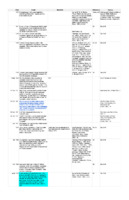 CS1 White Waitresses in Chinatown_Timeline of key events (In progress) In progress: timeline of key events related to the issue of of White waitresses working in Chinatown, Vancouver, cafes and restaurants, and the subsequent implication and application of municipal and provincial regulations and laws. The final timeline will feature the actions by the waitresses implicated, political allies, and the Hotel Restaurant and Employees Union Local 28. Related unpublished resource include demographic and biographical data of the waitresses. Contact the researcher for access.
CS1 White Waitresses in Chinatown_Timeline of key events (In progress) In progress: timeline of key events related to the issue of of White waitresses working in Chinatown, Vancouver, cafes and restaurants, and the subsequent implication and application of municipal and provincial regulations and laws. The final timeline will feature the actions by the waitresses implicated, political allies, and the Hotel Restaurant and Employees Union Local 28. Related unpublished resource include demographic and biographical data of the waitresses. Contact the researcher for access. -
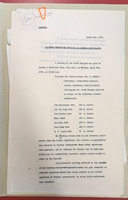 City of Vancouver Council Meeting Minutes, April 9, 1937. Vancouver City Mayor George C. Miller, Corporation Council, License Inspector, Surperintendent Darling, Mr. Denis Murphy on behalf of 7 Chinese-owned restaurants met to discuss "certain irregularities [that] have occured in Chinese restaurants where white waitresses were employed.
City of Vancouver Council Meeting Minutes, April 9, 1937. Vancouver City Mayor George C. Miller, Corporation Council, License Inspector, Surperintendent Darling, Mr. Denis Murphy on behalf of 7 Chinese-owned restaurants met to discuss "certain irregularities [that] have occured in Chinese restaurants where white waitresses were employed. -
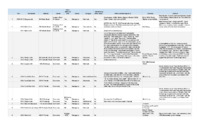 Vancouver White Help Restaurants: Newspaper ads and promotional writing (1929-1949) Survey of newspaper want ads, commercials, and promotional writing with mentions of "white help", "white help only", "white cooks". Includes union status, other descriptive language, owners names and bios. While multiple search strategies were employed on newspapers.com this does not claim to be a complete record. Some restaurants felt the promotion of their "white help only" status was a selling point for clients. 1/3 of restaurants found in this scan were HREU members.
Vancouver White Help Restaurants: Newspaper ads and promotional writing (1929-1949) Survey of newspaper want ads, commercials, and promotional writing with mentions of "white help", "white help only", "white cooks". Includes union status, other descriptive language, owners names and bios. While multiple search strategies were employed on newspapers.com this does not claim to be a complete record. Some restaurants felt the promotion of their "white help only" status was a selling point for clients. 1/3 of restaurants found in this scan were HREU members. -
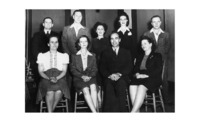 Executive of HREU Local 28 c.1947 SD_WLHP_MM3_006 Executive of H.R.E.U. Local 28 elected June 1947 [serving 1947-1948]. [Back row from left] Jimmy Lyons, Trustee; Bob Annola, Trustee; Margaret Shelton, Chairman [sic] of Education and Publicity; Gertrude Philip, Chairman of Social Committee; Roy Moore, Inspector. [Front row from left] Babella [Isabella] Beck, Recording Secretary; Emily Watts, President; Bob Williams, Vice President; May Ansell [Leniczek][Martin] , Secretary Treasurer and Business Agent.
Executive of HREU Local 28 c.1947 SD_WLHP_MM3_006 Executive of H.R.E.U. Local 28 elected June 1947 [serving 1947-1948]. [Back row from left] Jimmy Lyons, Trustee; Bob Annola, Trustee; Margaret Shelton, Chairman [sic] of Education and Publicity; Gertrude Philip, Chairman of Social Committee; Roy Moore, Inspector. [Front row from left] Babella [Isabella] Beck, Recording Secretary; Emily Watts, President; Bob Williams, Vice President; May Ansell [Leniczek][Martin] , Secretary Treasurer and Business Agent. -
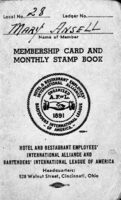 May Ansell [Martin] Member card and monthly stamp book Membership Card and Monthly Stamp Book for May Ansell [Martin], Hotel & Restaurant Employees' International Alliance and Bartenders League of America.
May Ansell [Martin] Member card and monthly stamp book Membership Card and Monthly Stamp Book for May Ansell [Martin], Hotel & Restaurant Employees' International Alliance and Bartenders League of America. -
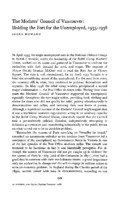 The Mothers' Council of Vancouver: Holding the Fort for the Unemployed, 1935-1938. An article document The Mothers' Council of Vancouver history and their work with the unemployed 1935-1938. Author Irene Howard.
The Mothers' Council of Vancouver: Holding the Fort for the Unemployed, 1935-1938. An article document The Mothers' Council of Vancouver history and their work with the unemployed 1935-1938. Author Irene Howard. -
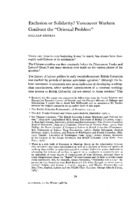 Exclusion or Solidarity:Vancouver Workers Confront the Oriental Problem Exclusion or Solidarity:Vancouver Workers Confront the Oriental Problem by author Gillian Creese. Examing the history of labour politics in early twentieth-century British Columbia, a period marked by periods of intense anti-Asian agitation and racist legislation. "Although the la bour movement is commonly seen as an indication of developing workingclass consciousness, white workers' consciousness of a common workingclass interest in British Columbia did not extend to Asian workers."
Exclusion or Solidarity:Vancouver Workers Confront the Oriental Problem Exclusion or Solidarity:Vancouver Workers Confront the Oriental Problem by author Gillian Creese. Examing the history of labour politics in early twentieth-century British Columbia, a period marked by periods of intense anti-Asian agitation and racist legislation. "Although the la bour movement is commonly seen as an indication of developing workingclass consciousness, white workers' consciousness of a common workingclass interest in British Columbia did not extend to Asian workers." -
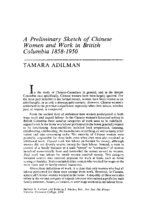 A Preliminary Sketch of Chinese Women and Work in British Columbia 1858-1950. A Preliminary Sketch of Chinese Women and Work in British Columbia 1858-1950 by Tamara Adilman.
A Preliminary Sketch of Chinese Women and Work in British Columbia 1858-1950. A Preliminary Sketch of Chinese Women and Work in British Columbia 1858-1950 by Tamara Adilman. -
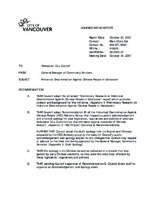 Historical discrimination against Chinese people in Vancouver A report presented to Vancouver City Council by the General Manager of Community Services on Oct 20, 2017. The report outlines the evidence of historical discrimination against Chinese people in Vancouver.
Historical discrimination against Chinese people in Vancouver A report presented to Vancouver City Council by the General Manager of Community Services on Oct 20, 2017. The report outlines the evidence of historical discrimination against Chinese people in Vancouver. -
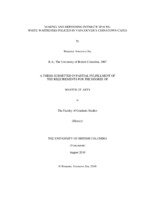 Making and defending intimate spaces: White waitresses policed in Vancouver's Chinatown cafes. Sia's thesis looks at the campaign by the Mayor and VPD against white waitresses working at Chinese-owned cafes in Chinatown that eventually led to protests by the waitresses, claims of immorality, cancelled business and an eventual settlement that saw the women fired from their jobs during the depression. licences MA Thesis, UBC 2010 fall. Rosanne Sia.
Making and defending intimate spaces: White waitresses policed in Vancouver's Chinatown cafes. Sia's thesis looks at the campaign by the Mayor and VPD against white waitresses working at Chinese-owned cafes in Chinatown that eventually led to protests by the waitresses, claims of immorality, cancelled business and an eventual settlement that saw the women fired from their jobs during the depression. licences MA Thesis, UBC 2010 fall. Rosanne Sia. -
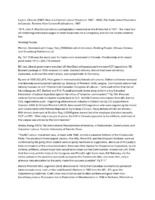 Researcher Notes on various Labour History sources. 1930s. 1940s. Sara Diamond's research notes from various sources. Good resource for communism and unions.
Researcher Notes on various Labour History sources. 1930s. 1940s. Sara Diamond's research notes from various sources. Good resource for communism and unions. -
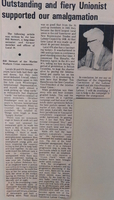 Outstanding and fiery unionist supported our amalgamation A reprint of an article by unionist William "Bill" Stewart on the challenges of organizing, published in commemoration of the amalgamation of Hotel, Restaurant and Employees Union Locals 676 an 28.
Outstanding and fiery unionist supported our amalgamation A reprint of an article by unionist William "Bill" Stewart on the challenges of organizing, published in commemoration of the amalgamation of Hotel, Restaurant and Employees Union Locals 676 an 28. -
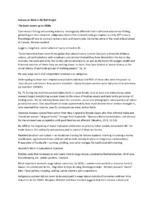 Notes on "Indians at Work in BC" Notes by Sara Diamond on "Indians [First Nations] at Work in BC" by Rolf Knight.
Notes on "Indians at Work in BC" Notes by Sara Diamond on "Indians [First Nations] at Work in BC" by Rolf Knight. -
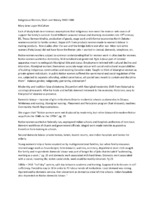 Notes on "Indigenous Women, Work and History 1940-1980" Sara Diamond's notes on "Indigenous Women, Work and History 1940-1980" by Mary Jane Logan McCallum
Notes on "Indigenous Women, Work and History 1940-1980" Sara Diamond's notes on "Indigenous Women, Work and History 1940-1980" by Mary Jane Logan McCallum -
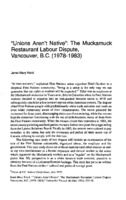 Unions Aren't Native: The Muckamuck Restaurant Labour Dispute Vancouver BC (1978-1983) Essay by Janet Mary Nicol on the Muckamuck dispute affecting First Nations restaurant workers represented by SORWUC,
Unions Aren't Native: The Muckamuck Restaurant Labour Dispute Vancouver BC (1978-1983) Essay by Janet Mary Nicol on the Muckamuck dispute affecting First Nations restaurant workers represented by SORWUC, -
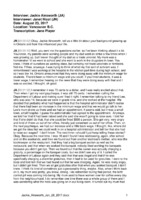 Jackie Ainsworth January 28, 2017 Interview Transcript. Jackie Ainsworth January 28, 2017 Interview Transcript. Includes her experiences with the Vancouver Women's Caucus and SORWUC.
Jackie Ainsworth January 28, 2017 Interview Transcript. Jackie Ainsworth January 28, 2017 Interview Transcript. Includes her experiences with the Vancouver Women's Caucus and SORWUC. -
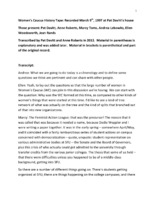 Vancouver Women's Caucus History "Because of the difficulty transcribing the tapes (bad recording equipment, several people talking at once), the tapes got put aside and were eventually misplaced. When they turned up 15 years later, Pat Davitt and Anne Roberts decided it would be a good retirement project to get the work done. They met on many Sunday mornings for nearly a year in 2013 to complete the work. After the tapes were transcribed (transcript of tape 1; transcript of tape 2), the original group (minus Andrea, who died in 2011, and Ellen, who decided she was too busy to continue working on the project) began to meet monthly in 2014 to talk about what, if anything, to do with the material. Joined by Liz Briemberg, the group decided the following priorities, depending on what energies and interest they have to follow through: The transcripts and tapes would be donated to the Women’s Caucus collection in the SFU archives; The transcripts would be circulated to other women who had been Caucus members with requests for feedback (reactions, corrections, arguments) and for additional material to fill in the gaps (in written form or in an interview format); Oral histories would be collected as much as possible from the women involved in the various workshops or subcommittees, such as the working women’s group, The Pedestal, the Indo-Chinese Women’s Conference and the education committee. (We decided that the abortion campaign was already well-documented.) To make all this material widely available to the public, a website would be created where we could also post pictures, leaflets, posters, articles, podcasts, songs and links to other historical documents, books, such as Ann Thompson’s book on the abortion battle in Canada, etc. When contacting other members, the group has been asking them to write down their own memories and analyses – when and how they got involved, what happened and why, and what they did after Women’s Caucus. The idea is to make all this material available on a website somewhat like Wikipedia in that everyone would have a chance to post what they want and no editorial board would exercise control of the content (except in the unlikely event of libel, racism, sexism, etc.) The group has been soliciting everyone to get out those old boxes stored in attics and help them obtain any leaflets, articles, posters, pictures, etc. to compile a complete record as possible. [https://www.vancouverwomenscaucus.ca/herstory/early-days/]
Vancouver Women's Caucus History "Because of the difficulty transcribing the tapes (bad recording equipment, several people talking at once), the tapes got put aside and were eventually misplaced. When they turned up 15 years later, Pat Davitt and Anne Roberts decided it would be a good retirement project to get the work done. They met on many Sunday mornings for nearly a year in 2013 to complete the work. After the tapes were transcribed (transcript of tape 1; transcript of tape 2), the original group (minus Andrea, who died in 2011, and Ellen, who decided she was too busy to continue working on the project) began to meet monthly in 2014 to talk about what, if anything, to do with the material. Joined by Liz Briemberg, the group decided the following priorities, depending on what energies and interest they have to follow through: The transcripts and tapes would be donated to the Women’s Caucus collection in the SFU archives; The transcripts would be circulated to other women who had been Caucus members with requests for feedback (reactions, corrections, arguments) and for additional material to fill in the gaps (in written form or in an interview format); Oral histories would be collected as much as possible from the women involved in the various workshops or subcommittees, such as the working women’s group, The Pedestal, the Indo-Chinese Women’s Conference and the education committee. (We decided that the abortion campaign was already well-documented.) To make all this material widely available to the public, a website would be created where we could also post pictures, leaflets, posters, articles, podcasts, songs and links to other historical documents, books, such as Ann Thompson’s book on the abortion battle in Canada, etc. When contacting other members, the group has been asking them to write down their own memories and analyses – when and how they got involved, what happened and why, and what they did after Women’s Caucus. The idea is to make all this material available on a website somewhat like Wikipedia in that everyone would have a chance to post what they want and no editorial board would exercise control of the content (except in the unlikely event of libel, racism, sexism, etc.) The group has been soliciting everyone to get out those old boxes stored in attics and help them obtain any leaflets, articles, posters, pictures, etc. to compile a complete record as possible. [https://www.vancouverwomenscaucus.ca/herstory/early-days/] -
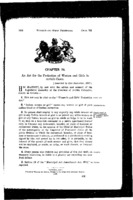 Women and Girls' Protection Act, Chapter 76 Women and Girls' Protection Act, Chapter 76, 1923
Women and Girls' Protection Act, Chapter 76 Women and Girls' Protection Act, Chapter 76, 1923 -
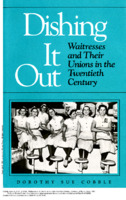 Dishing it Out: Waitresses and their Unions in the Twentieth Century Back when SOS or Adam and Eve on a raft were things to order if youwere hungry but a little short on time and money, nearly one-fourth of all waitresses belonged to unions. By the time their movement peaked in the 1940s and 1950s, the women had developed a distinctive form of working-class feminism, simultaneously pushing for equal rights and pay and affirming their need for special protections. Dorothy Sue Cobble shows how sexual and racial segregation persistedin wait work, but she rejects the idea that this was caused byemployers' actions or the exclusionary policies of male trade unionists.Dishing It Out contends that the success of waitress unionism wasdue to several factors: waitresses, for the most part, had nontraditionalfamily backgrounds, and most were primary wage-earners. Theirclose-knit occupational community and sex-separate union encouragedfemale assertiveness and a decidedly unromantic view of men andmarriage. Cobble skillfully combines oral interviews and extensivearchival records to show how waitresses adopted the basic tenets ofmale-dominated craft unions but rejected other aspects of male unionculture. The result is a book that will expand our understanding offeminism and unionism by including the gender consciousperspectives of working women. [Source: UI Press]
Dishing it Out: Waitresses and their Unions in the Twentieth Century Back when SOS or Adam and Eve on a raft were things to order if youwere hungry but a little short on time and money, nearly one-fourth of all waitresses belonged to unions. By the time their movement peaked in the 1940s and 1950s, the women had developed a distinctive form of working-class feminism, simultaneously pushing for equal rights and pay and affirming their need for special protections. Dorothy Sue Cobble shows how sexual and racial segregation persistedin wait work, but she rejects the idea that this was caused byemployers' actions or the exclusionary policies of male trade unionists.Dishing It Out contends that the success of waitress unionism wasdue to several factors: waitresses, for the most part, had nontraditionalfamily backgrounds, and most were primary wage-earners. Theirclose-knit occupational community and sex-separate union encouragedfemale assertiveness and a decidedly unromantic view of men andmarriage. Cobble skillfully combines oral interviews and extensivearchival records to show how waitresses adopted the basic tenets ofmale-dominated craft unions but rejected other aspects of male unionculture. The result is a book that will expand our understanding offeminism and unionism by including the gender consciousperspectives of working women. [Source: UI Press] -
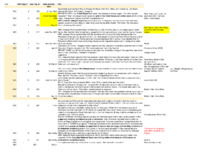 CVA VDTLC Minutes 1930-1948: Researchers Notes Researcher notes taken from Vancouver District Labour Council Minutes 1930-1948.
CVA VDTLC Minutes 1930-1948: Researchers Notes Researcher notes taken from Vancouver District Labour Council Minutes 1930-1948. -
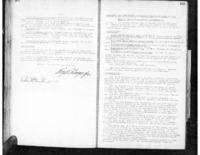 VDTLC Minutes - Research selection 1937-1941 VDTLC scanned minutes (June 1937-June 1941) various years, related to Case Study 1 research spreadsheet CVA VDTLC Minutes 1930-1948 . Issues relevant to Case Study 1 include: 1931 Feb 3, Chinese cooks support the waitress strike; 1937 May 3, Restaurant Employers and their association attempt to form parallel restaurant sector unions to undermine the HREU. 1938, Dual organizing (related to the communist contingent) begins 1938 Mar 15, A pushback against "anti-orientalism" begins from Asian HREU members and others, Like Bill Stewart. 1939 Mar 21, HREU is given jurisdiction over apartment hotels, and the Fish and Oyster Bar goes 100%union. 1940 Feb 6, Communist party expelled; Feb 20 showdown between communist leaders/dominant 1940 Oct, dual council in city with CIO established (communism) 1941 Feb 4, Report on hotel strike and settlement of the Hotel Vancouver 1941 Trouble with union houses
VDTLC Minutes - Research selection 1937-1941 VDTLC scanned minutes (June 1937-June 1941) various years, related to Case Study 1 research spreadsheet CVA VDTLC Minutes 1930-1948 . Issues relevant to Case Study 1 include: 1931 Feb 3, Chinese cooks support the waitress strike; 1937 May 3, Restaurant Employers and their association attempt to form parallel restaurant sector unions to undermine the HREU. 1938, Dual organizing (related to the communist contingent) begins 1938 Mar 15, A pushback against "anti-orientalism" begins from Asian HREU members and others, Like Bill Stewart. 1939 Mar 21, HREU is given jurisdiction over apartment hotels, and the Fish and Oyster Bar goes 100%union. 1940 Feb 6, Communist party expelled; Feb 20 showdown between communist leaders/dominant 1940 Oct, dual council in city with CIO established (communism) 1941 Feb 4, Report on hotel strike and settlement of the Hotel Vancouver 1941 Trouble with union houses -
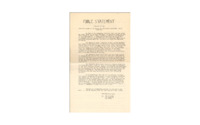 Public Statement HREU A call to action in response to the expulsion of current female leadership from the HREU and likely predicated on their Communist affiliation. The front page is a Public statement released by the Hotel Restaurant Employees Union Local 28 from the Executive Board Emily Watts, May Leniczek, Roy Moore. Back page proposes the BC Federation of Hotel, Restaurant and Allied Service Workers. A call to action in response to the expulsion of current female leadership from the HREU and likely predicated on their Communist affiliation.
Public Statement HREU A call to action in response to the expulsion of current female leadership from the HREU and likely predicated on their Communist affiliation. The front page is a Public statement released by the Hotel Restaurant Employees Union Local 28 from the Executive Board Emily Watts, May Leniczek, Roy Moore. Back page proposes the BC Federation of Hotel, Restaurant and Allied Service Workers. A call to action in response to the expulsion of current female leadership from the HREU and likely predicated on their Communist affiliation.
